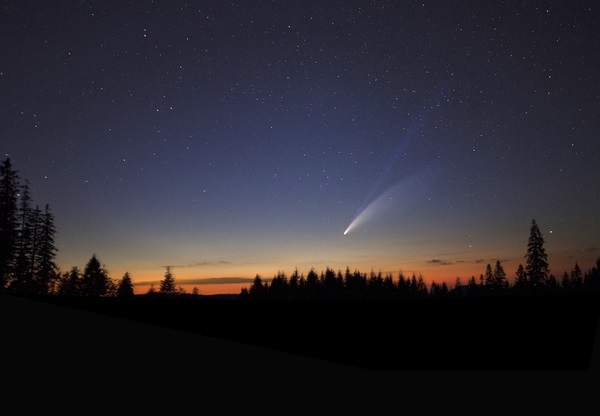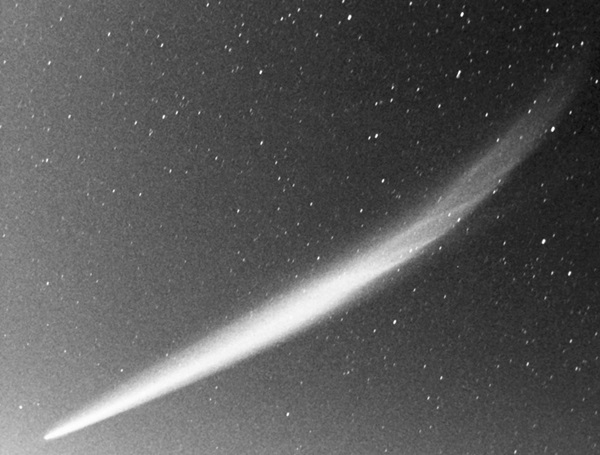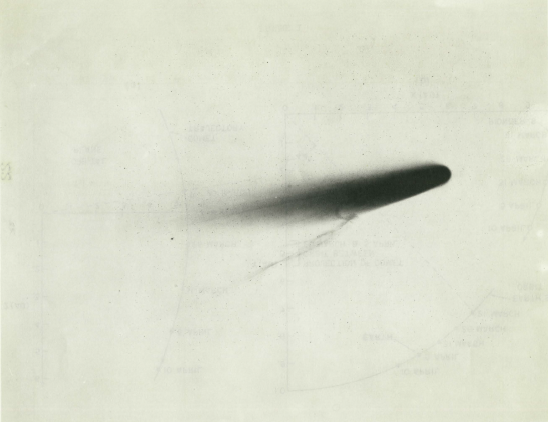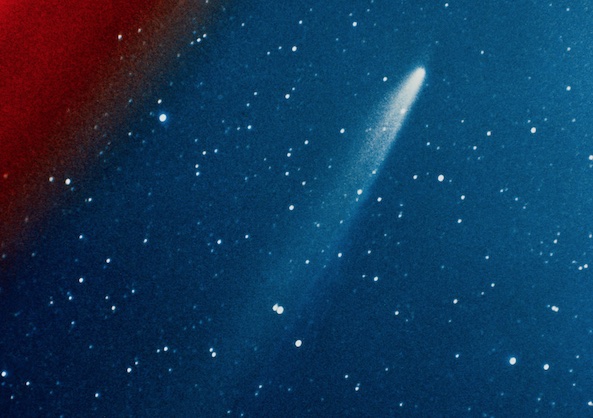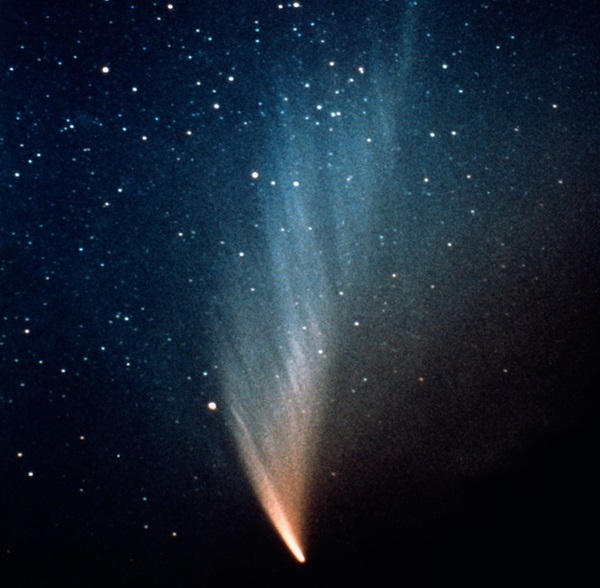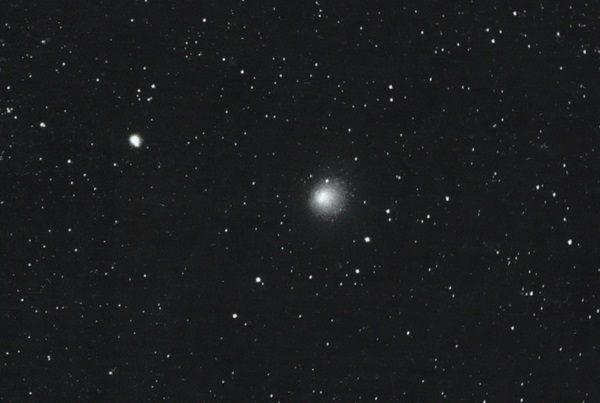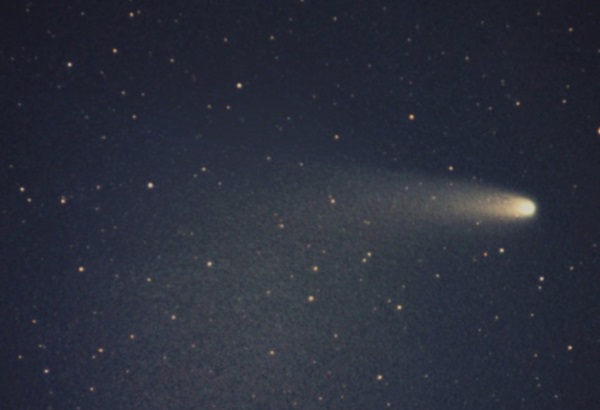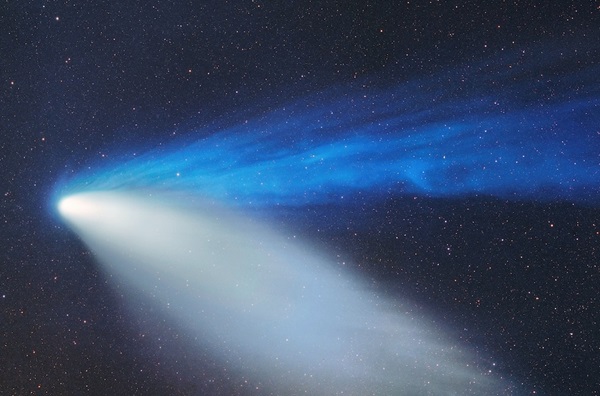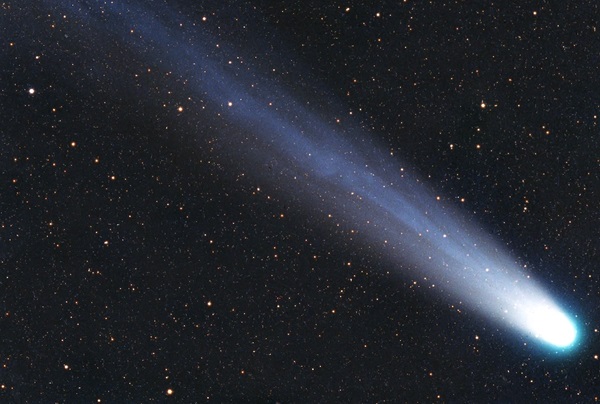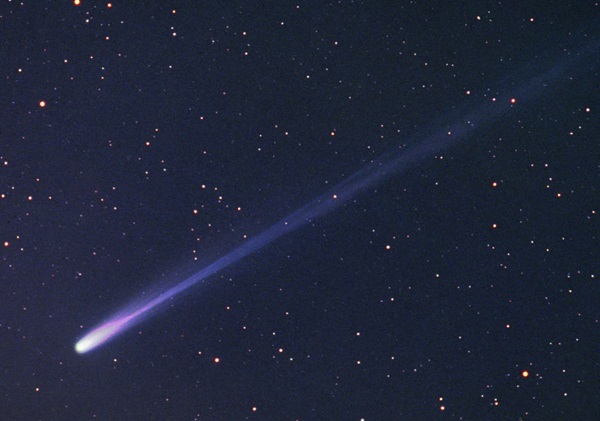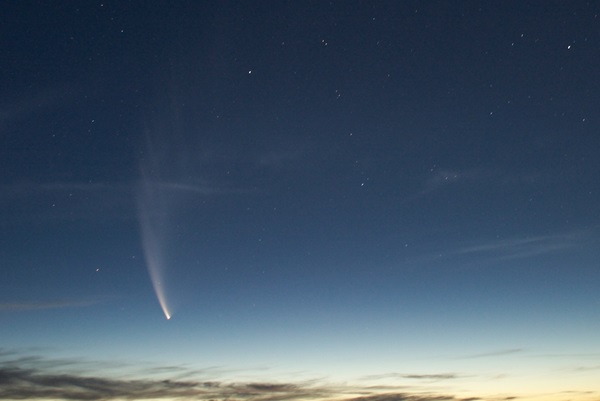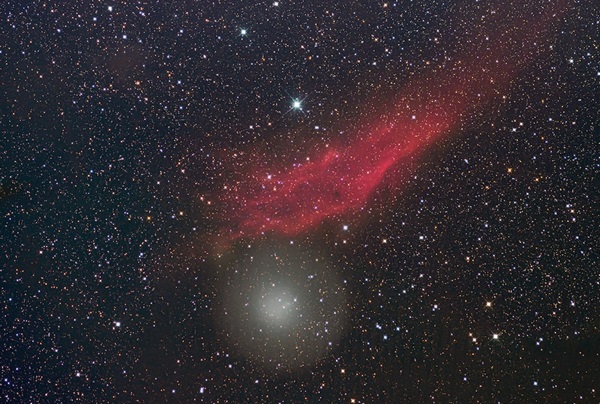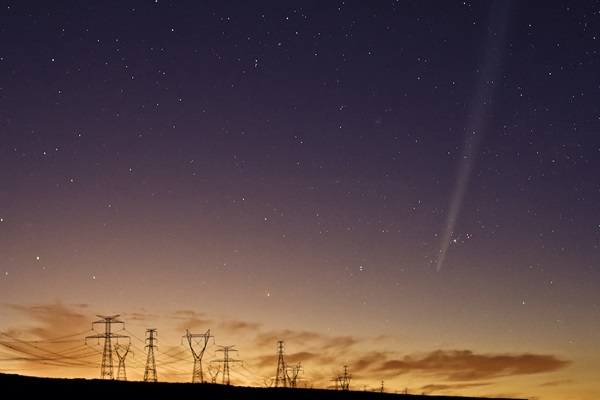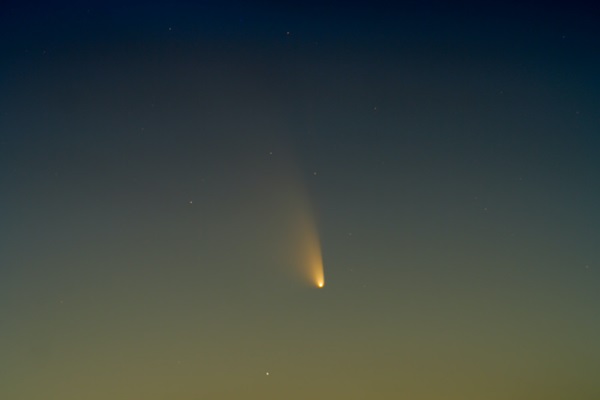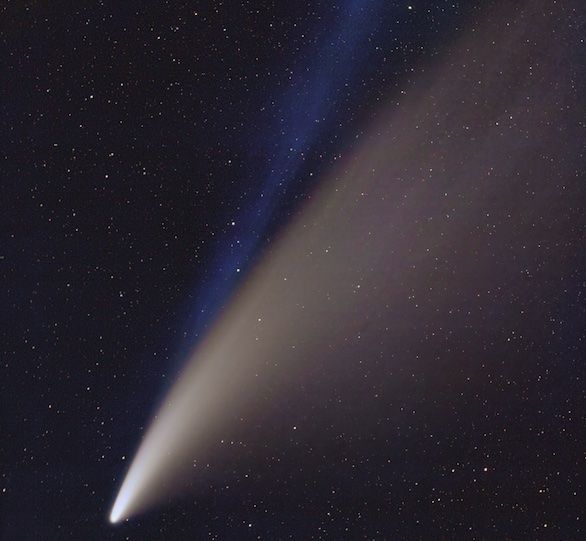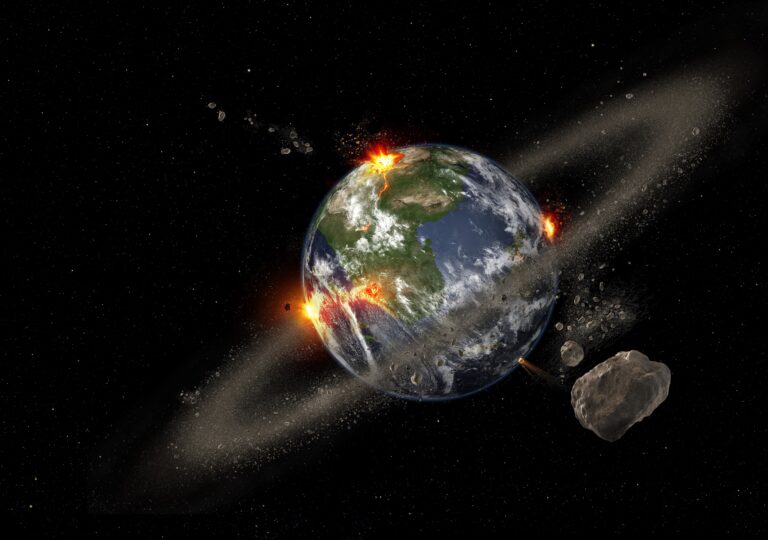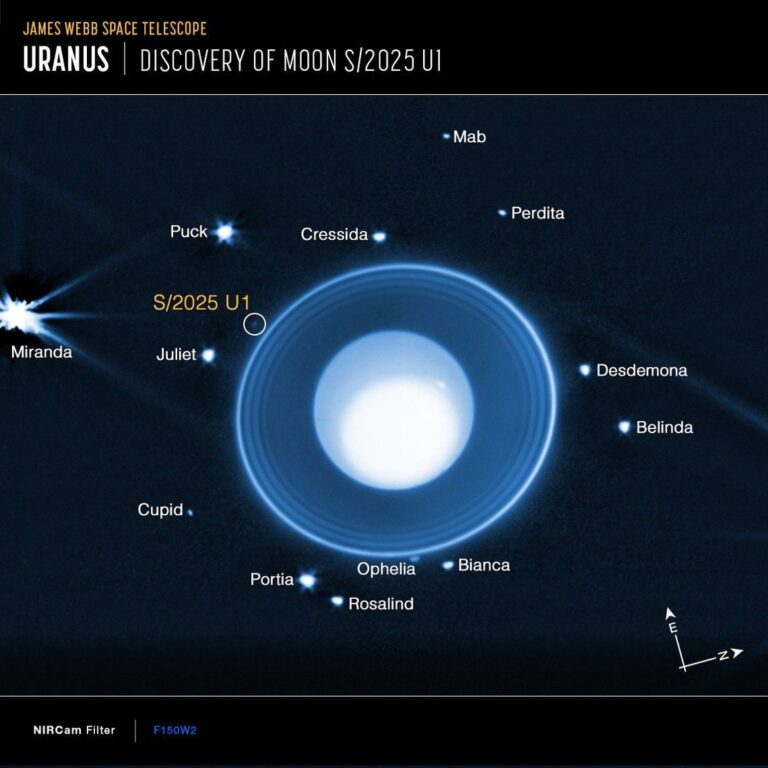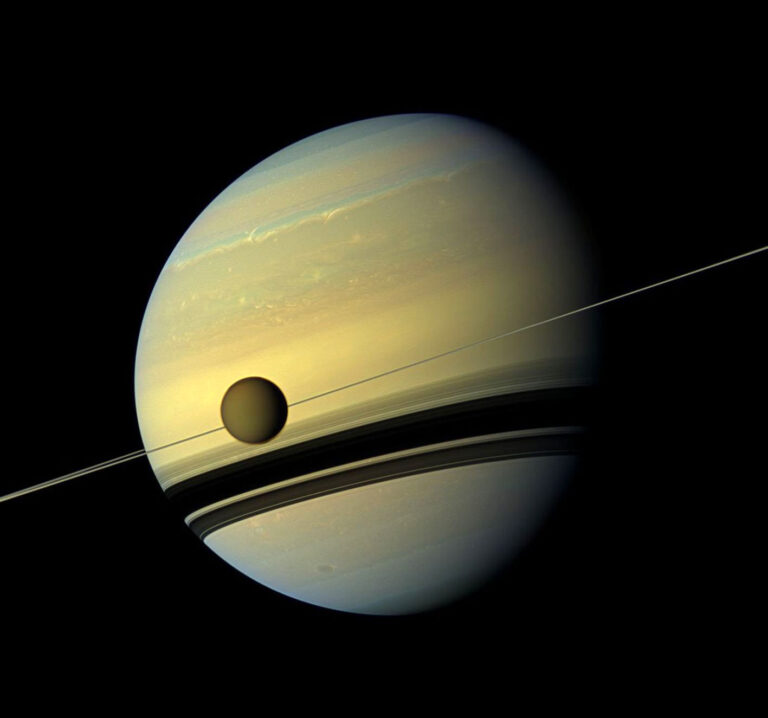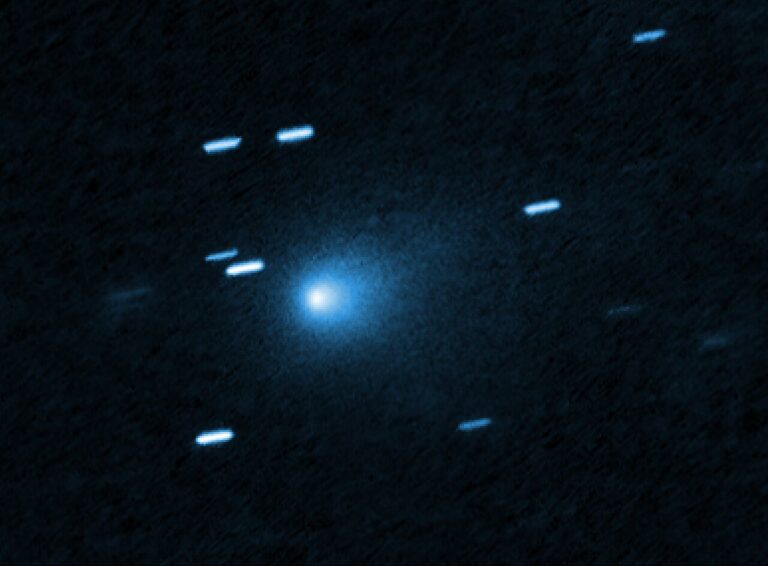Key Takeaways:
- The article details the characteristics and visibility of several "great" comets, defined as those readily visible to the naked eye, throughout recent astronomical history.
- Several comets, including Ikeya-Seki (C/1965 S1), Bennett (C/1969 Y1), West (C/1975 V1), and McNaught (C/2006 P1), are highlighted for their exceptional brightness and/or unusual features, such as unusually long tails or fragmentation.
- The article contrasts highly anticipated comets, like Kohoutek (C/1973 E1), which failed to meet expectations, with those that exceeded them, such as Hale-Bopp (C/1995 O1) and Hyakutake (C/1996 B2).
- Comet Shoemaker-Levy 9 (D/1993 F2) is discussed as a unique case of a "great" comet due to its collision with Jupiter, a significant astronomical event.
Great comets are fixtures throughout astronomical history. They pop up unexpectedly and can change the way people see the skies, creating unforgettable experiences that can inspire and live on in our collective memory. Typically, astronomers denote a comet as “great” if it reaches easy naked-eye visibility. It helps if the comet can be seen for a long time, as was the case with Comet Hale-Bopp (C/1995 O1), but even a comet only visible for a few days can be great if it’s bright enough. The most recent great comet was Comet McNaught (C/2006 P1).
Readers familiar with my stories know that I love lists. So, when asked to choose the greatest comets in recent history, I thought, “Oh, what fun that will be!” The big question was how far back to go. Initially, I decided to start when Astronomy began, in 1973. After more thought, however, there were two comets I simply couldn’t leave off the list. I think you’ll agree because the first was one of the most spectacular celestial sights ever seen.
If you’re old enough to have observed any of the following comets’ visits, you’ll remember exactly where you were when they blazed brightest in the sky. So, let’s take a trip down memory lane — and keep hope alive that we’ll all be treated to another great comet very soon.
Comet Ikeya-Seki (C/1965 S1)
On Sept. 18, 1965, amateur astronomer Kaoru Ikeya and professional astronomer Tsutomu Seki independently discovered what became the greatest comet of the century, Ikeya-Seki. When researchers calculated its orbit, they found it was a sungrazer — a comet that passes extremely close to the Sun. Small sungrazers usually evaporate or are torn apart by tidal forces. Large ones, however, can not only survive, but might also become extremely bright. Observers hoped Ikeya-Seki would fall into the latter category.
They didn’t have long to wait. The comet reached perihelion (its closest point to the Sun) Oct. 21, when it was just 290,000 miles (467,000 kilometers) above our daytime star’s surface. Ikeya-Seki was most visible the day of perihelion when, at midday in Japan, many observers detected it with their naked eyes in broad daylight. At its brightest, the comet reached an astounding magnitude –10, meaning that it shone about 10 percent as bright as the Full Moon, or 110 times brighter than Venus ever gets.
Images showed that, just before perihelion, the comet broke into three separate pieces. The two main ones will return around 2842 and 3021. This event mirrored the initial formation of the comet, which astronomers believe happened when the Great Comet of 1106 (X/1106 C1) broke up into thousands of smaller bodies.
Comet Bennett (C/1969 Y1)
Comet Bennett, the brightest comet seen after Ikeya-Seki, was a magnitude 8.5 object when South African amateur astronomer John Caister Bennett discovered it Dec. 28, 1969. It reached naked-eye visibility from dark locations in early February 1970. During the first week of March, it sported a tail some 10° long. It wasn’t just the length of the tail, however, that thrilled observers. Bennett’s tail contained a number of filaments, each of which resembled an individual comet’s tail.
The comet reached perihelion March 20, 1970, when it approached to within 50 million miles (80.5 million km) of the Sun. Six days later, when Bennett was closest to Earth (64 million miles [103 million km]), it peaked at magnitude 0. When the comet was at its brightest, observers and scientists paid particular attention to the coma, which showed short features extending from the sunward side of the nucleus. Known as anti-tails, these components appear to point toward the Sun as Earth passes through the comet’s orbital plane, but they’re really just trails of dust left in the comet’s wake.
Comet Kohoutek (C/1973 E1)
Let me be honest: The only reason Comet Kohoutek ranks as “great” is because the media hyped it as the “comet of the century.” I fondly remember talk-show host Johnny Carson discussing Kohoutek with American astronomer Carl Sagan — but I don’t remember the comet itself in a good light. We can think of it more as the great comet that never was.
Astronomers believed Kohoutek would be a bright comet for two reasons. First, when it was discovered by Czech astronomer Luboš Kohoutek on March 18, 1973, it was nearly 442 million miles (711 million km) from the Sun. To be visible from such a distance meant that it must be a large body.
The second reason was that when researchers calculated its orbit, they realized this was Kohoutek’s first visit to the inner solar system. Before then, it had resided in the Oort Cloud. That meant its outer layers were still pristine, having never been boiled away by repeated visits near the Sun.
Unfortunately, Kohoutek brightened much more slowly than expected and proved a disappointment to the hundreds of thousands of people who went to view it. Still, it has one positive note: It was the first comet observed by astronauts in space. The crews of both NASA’s Skylab 4 and the Soviet Union’s Soyuz 13 missions reported seeing it.
Comet West (C/1975 V1)
Danish astronomer Richard M. West discovered the comet that would bear his name Nov. 5, 1975, in images taken at the European Southern Observatory in La Silla, Chile. As this was soon after the Comet Kohoutek debacle, most astronomers voiced low expectations for Comet West, saying it probably wouldn’t be an impressive sight when it emerged from behind the Sun.
What a nice surprise then, when for three days around its perihelion of Feb. 25, 1976, it reached magnitude –3 and became visible in broad daylight — the first comet since Ikeya-Seki to grow that bright. During the first week of March, its magnitude dropped to 0, but it sported a tail some 25° long.
At perihelion, West passed 18.3 million miles (29.4 million km) from the Sun. During its close encounter, tidal forces from our star broke the comet into four pieces.
Comet IRAS-Araki-Alcock (C/1983 H1)
If you were lucky enough to lay eyes on this object, you’ll remember it didn’t look like a traditional comet. In fact, Comet IRAS-Araki-Alcock didn’t show a tail — at its brightest, it looked to the naked eye like an unresolved globular cluster. But with a diameter nearly as large as the Full Moon, it appeared a lot bigger than many globulars. It also was moving fast because it was so near to Earth. Indeed, at its closest point to Earth, it passed just 2.9 million miles (4.8 million km) from our planet, making it the closest comet since 1770. At this distance, IRAS-Araki-Alcock traveled across some 30° of sky per day. The comet glowed at 2nd magnitude at its brightest.
As is tradition with comets, this one is named for its discoverers. The first one, however, isn’t a person. It’s the Infrared Astronomical Satellite, or IRAS, which was active for 10 months in 1983. It imaged the comet April 25, 1983. The other two are people: Japanese amateur astronomer Genichi Araki and British astronomer George Alcock, both of whom independently discovered it May 3. Surprisingly, Alcock found the comet using binoculars from inside his home, while looking through a window.
IRAS-Araki-Alcock is a long-period comet. It should return in 2953.
Comet Halley (1P)
I’ve often heard people say that non-astronomers recognize three celestial objects: the Moon, the rings of Saturn, and Halley’s Comet. History’s first identified periodic comet, 1P/Halley, returned to the night sky in 1982 for its most-observed appearance on record. And that’s saying something, because it’s been observed at least as far back as 240 B.C.
Unfortunately, during that recent appearance, celestial geometry wasn’t on our side: Perihelion occurred Feb. 9, 1986, when Halley was on the opposite side of the Sun from Earth. Still, it peaked at magnitude 2.4 in early March, putting on a decent show for those in the Southern Hemisphere.
The comet is named for English astronomer Edmond Halley, but he didn’t discover it. In 1705, he published a paper in which he wrote that the comets seen in 1531, 1607, and 1682 were all the same object. He further predicted that this comet would return to Earth’s skies in 1758. And although Halley died in 1742 before he could see the outcome for himself, his prediction came true when observers sighted the comet on Christmas night 1758.
Comet Halley’s next perihelion will occur July 28, 2061. At that time, it is predicted to glow at magnitude –0.3, 12 times as bright as its peak in 1986.
Comet Shoemaker-Levy 9 (D/1993 F2)
A comet generally attains greatness either by being bright or by exhibiting strange features or movement. But there’s one other way: It can hit a planet! Comet Shoemaker-Levy 9 (SL9) was discovered March 24, 1993, by American astronomer Carolyn Shoemaker, American geologist Eugene Shoemaker, and Canadian amateur astronomer David Levy.
By the time the trio found it, SL9 had been orbiting Jupiter for decades, after being captured by the planet’s gravity. And it wasn’t just trapped — tidal forces from the giant planet had broken the comet into more than 20 pieces.
But the most exciting news came when astronomers calculated SL9’s orbit. They found that its fragments would collide with Jupiter during a six-day stretch in July 1994. Each created a fireball — several visible from Earth — followed by the formation of a dark spot when debris from the fragment spread through the jovian atmosphere. The largest spot measured some 1,550 miles (2,500 km) across and was circled by two rings. The outermost ring was 7,500 miles (12,000 km) across, nearly as big as Earth.
The media was more than a little excited. But this time, it was a good thing. Indeed, the hoopla benefited astronomy clubs, whose members showed the public the new spots for several weeks. As the last spot faded, amateur astronomers thought, “We’ll never have a comet that famous again in our lifetimes!” Uncharacteristically for astronomy, the wait for something better was less than two years away.
Comet Hale-Bopp (C/1995 O1)
American astronomer Alan Hale, observing from Cloudcroft, New Mexico, and American amateur astronomer Thomas Bopp, observing near Stanfield, Arizona, independently discovered Comet Hale-Bopp July 23, 1995. Both observers had been viewing the globular cluster M70 in Sagittarius and spotted the comet nearby. Orbital calculations showed that on the night they found it, Hale-Bopp lay some 7.2 astronomical units from the Sun, nearly twice the usual discovery distance for comets. (One astronomical unit, or AU, is the average distance between Earth and the Sun.)
Luckily, unlike Comet Kohoutek, Comet Hale-Bopp brightened according to predictions. It first became visible to the naked eye from the darkest sites May 17, 1996, and remained so for 18 months, surpassing the old record of nine months set by the Great Comet of 1811. On March 7, 1997, Hale-Bopp reached magnitude 0. Two weeks later, it peaked at magnitude –0.8, which is brighter than any star except Sirius (Alpha [α] Canis Majoris), with a tail that extended nearly 20°. It was last seen with the naked eye Dec. 9, 1997.
Stating that Hale-Bopp is a long-period comet seems a bit of an understatement. Its previous perihelion was in July 2215 B.C., when it may have been observed in Egypt. It will next reach perihelion in 4385 or later.
Comet Hyakutake (C/1996 B2)
Japanese amateur astronomer Yuji Hyakutake was surprised when he discovered this comet through 25×150 binoculars Jan. 30, 1996. It was in Libra, less than 4° from where he had found a different dirty snowball on Christmas night the previous month. Comet Hyakutake continued to surprise observers, many of whom (myself included) say that it’s the greatest comet they’ve ever seen.
The comet reached naked-eye visibility Feb. 26 and began a fairly quick rise in brightness through March. It peaked at magnitude 0 late that month. Comet Hyakutake sported a spectacular tail, which observers at dark sites could see stretch for 100°.
But the tail’s length was only half the story. On March 25, the night of Hyakutake’s closest approach to Earth, observers reported that colors were easily visible throughout its length. Streamers in the tail exhibited various shades of blue, purple, and green. The coma also put on a show. Around this time, it had a diameter of 1.5°, three times the width of the Full Moon.
Apart from its closest approach, probably the most thrilling sight was when observers in Europe and the U.S. saw it alongside a totally eclipsed Moon April 3/4. The final naked-eye report came May 29. Unfortunately, it will be another 98,000 years or so before Hyakutake returns to the inner solar system.
Comet NEAT (C/2002 V1)
This comet was discovered Nov. 6, 2002, on an exposure taken by the 1.2-meter Schmidt telescope located at the Near-Earth Asteroid Tracking observatory in Hawaii. NEAT was a program run by NASA and the Jet Propulsion Laboratory from 1995 until 2007. The comet reached perihelion Feb. 18, 2003. At that point, it was only 9.2 million miles (14.8 million km) from the Sun.
Although some astronomers predicted that a comet as small as NEAT wouldn’t survive its close encounter with the Sun, it did. Scientists estimate it will return in approximately 37,000 years. At its brightest, the comet shone at a worthy magnitude –0.5.
One interesting coincidence occurred when a coronal mass ejection hit the comet Feb. 17, a day before perihelion. NEAT’s nucleus was unaffected, though astronomers saw signs of an interaction between the solar material and the comet’s tail.
Comet McNaught (C/2006 P1)
Scottish-Australian astronomer Robert H. McNaught discovered his 31st comet (out of 82 total) in the constellation Ophiuchus on Aug. 7, 2006. But this Comet McNaught would prove more wonderful than all his other discoveries put together. Indeed, it became the second-brightest comet since 1935, topped only by Ikeya-Seki in 1965.
Its journey into the inner solar system took it within 15.9 million miles (25.6 million km) of the Sun on Jan. 12, 2007, the date of its perihelion. It peaked in brightness the following days at magnitude –5.5, bright enough to see during daylight hours. The comet was a stunner in the Southern Hemisphere, sporting luminous bands in a tail that stretched some 35°.
The nucleus of Comet McNaught originated in the Oort Cloud, a collection of trillions of icy bodies that lie in a sphere between 2,000 and 100,000 AU from the Sun. As such, it was a first-time visitor that took uncounted millions of years to reach us. Calculating its return is a bit sketchy, but astronomers’ best guess is that it will reappear in approximately 92,000 years.
Comet Holmes (17P)
Comet Holmes, the 17th recognized periodic comet, was discovered Nov. 6, 1892, by British amateur astronomer Edwin A. Holmes. Although Holmes has a period of 6.9 years, it’s only been observed a few times since its discovery (generally because it is too faint). One of them, however, stands out.
Holmes put on a terrific show in the fall of 2007 with a brilliant outburst months after its May 4 perihelion. In just 42 hours during Oct. 23 and 24, it brightened more than 478,000 times: from magnitude 17 to magnitude 2.8. It peaked at magnitude 2.4 by the end of the month. During that time, Holmes’ coma expanded to an apparent diameter of nearly 1°.
Who knows if the comet will put on another repeat performance in the future. Be sure to follow its next perihelion, which will occur Jan. 31, 2028.
Comet Lovejoy (C/2011 W3)
Australian amateur astronomer Terry Lovejoy’s third comet discovery (he currently has six) took place Nov. 27, 2011. Based on its orbit, astronomers found the celestial visitor was a sungrazer that would pass within 516,000 miles (830,000 km) of the Sun at perihelion Dec. 16. When they studied the orbit, they concluded the comet was one of a special group known as Kreutz sungrazers. Researchers believe each of these objects originated when a single large comet broke up, probably several thousand years ago. At least half a dozen comets from this group have attained “great” status, including the Great Comet of 1882, which, at an estimated magnitude –17, shone more than 50 times brighter than the Full Moon. Ikeya-Seki was another famous Kreutz sungrazer.
Many experts expected the small comet to break up during its close passage, but Comet Lovejoy survived its plunge into the Sun’s corona. And although it was difficult to observe because it was so close to the Sun, amateur astronomers estimated it peaked at magnitude –1 after perihelion. It will next return around 2633.
Comet PanSTARRS (C/2011 L4)
On June 6, 2011, C/2011 L4 became one of many comets discovered by the Panoramic Survey Telescope and Rapid Response System (Pan-STARRS) 1 telescope in Hawaii. At the time, it lay some 730 million miles (1.2 billion km) from the Sun, so hopes were high that it would become bright.
PanSTARRS was first sighted by naked-eye observers Feb. 7, 2013. It passed closest to Earth on March 5 and reached perihelion five days later. Its brightness was difficult to estimate because the comet never rose high above the horizon. It peaked around 1st magnitude, but most observers recall that it was a stunning binocular object.
Comet PanSTARRS followed a hyperbolic orbit, which would normally mean it will never return. Gravitational interactions with the Sun and planets, however, altered its orbit slightly, so astronomers now think it will return — in 105,000 years!
Comet NEOWISE (C/2020 F3)
The final comet on our list was discovered by a team of researchers March 27, 2020, using the Near-Earth Object Wide-field Infrared Survey Explorer (NEOWISE). When astronomers calculated its orbit, they found it would reach perihelion July 3, passing 27 million miles (44 million km) from the Sun.
Before perihelion, NEOWISE required a telescope or large binoculars. Afterward, however, it brightened significantly for a few days. At its best, the comet reached magnitude 1.5. Those using binoculars and telescopes could see the comet’s tails, but these features really showed detail in photographs. At their longest, both the ion tail and the dust tail were more than 50° long.
NEOWISE is a long-period comet. Before perihelion, its orbital period was about 4,400 years. But after its interactions with objects in the inner solar system, the period lengthened to nearly 6,800 years. Did it reach great comet status? Observers who say yes cite its magnitude, even though it was only bright for a couple of days.
Keep hope alive
Bright comets can help us spread our love of astronomy to the general public. Surveys and observers now discover roughly 200 comets each year. Let’s hope one of them in the near future rises to greatness.

